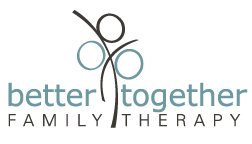How do Art Therapists treat ADHD and Anxiety?
Art Therapy can help with Adult ADHD and Anxiety. It’s not just for kids (but it’s helps them too).
Do you ever feel you were bouncing haphazardly off the walls? You know you need to center yourself and gain control of nervous energy. Art therapy just may be that missing “peace” to help you get back into balance. Art Therapy is an opportunity for grounding and self-awareness.
Sometimes there are just no words for your experiences. Art Therapy offers a safe space to creatively release the complexities of what is held in your mind. It makes it tangible. With your inner self now tangible, the art making experience engages all of your senses. And opens the door to discovering your healthier balanced life.
How does Art Therapy treat Anxiety?
Anxiety is persistent worry or fear of everyday situations. It impacts the quality and satisfaction of daily life as it constantly activates the autonomic nervous systems stress response, fight flight or freeze. Art therapy helps to identify triggers in a non-threatening manner. Processing through triggers of the sympathetic nervous system (flight fight freeze) through art helps to make the unconscious tangible. And thereby create possibilities to help activate the parasympathetic nervous system (rest and digest) to find understanding, balance and peace.
Art Therapy helps you to create new narratives, new perspectives and new actions. Art making is a mindful practice that induces relaxation by activating the vagus nerve. You can feel empowered and in control of your choices, which can help to counterbalance the overwhelming experience of anxiety. It creates a safe space for expression, similar to exposure, yet at a distance. This emotional distancing during the process of creating art work can help you grow into the best version of yourself.
How does Art Therapy treat ADHD symptoms in adults?
Symptoms of ADHD in adults include inattentiveness, hyperactivity and impulsiveness. People with ADHD often need to move to concentrate. Movement and art can and do go together. Art making welcomes the client to stand, sit, explore, create, discover and more. Art making in itself provides an opportunity to focus, get into a flow and calm the nervous system. Each art directive has a specific goal in mind to foster cathartic release and healing.
You can also use your hyperfocus in Art Therapy. ADHD helps you understand complex relationships between ideas. Art Therapists use a lot of metaphor and layers of expression (writing, dialogue) to deepen your awareness. In the creative process you can practice attention to detail and regulating control of emotional states. Our behavioral, cognitive and emotional regulation are all malleable and can benefit from engaging in Art Therapy.
Art therapy is also a way to build frustration tolerance. It helps to build mental flexibility and teaches you to overcome obstacles that may arise. As Bob Ross once said, “There are no mistakes in art, just happy little accidents.”
What is Art Therapy?
Art Therapy enriches the lives of individuals, families, and communities through active art-making, creative process and applied psychological theory. Art Therapy, facilitated by a professional art therapist, effectively supports personal and relational treatment goals. Art Therapy is used to:
improve cognitive and sensory-motor functions
foster self-esteem and self-awareness
cultivate emotional resilience
promote insight
enhance social skills
reduce and resolve conflicts and distress
Art therapists take courses on psychological theory and art techniques. Maryland Art Therapists need a Master’s degree in Art Therapy, Art Therapy Board Certification (ATR-BC) and licensure with the Maryland Board of Professional Counselors and Therapists (LCPAT). Art Therapy can be utilized in collaboration with other treatment modalities such as trauma informed therapy, CBT and DBT to enhance the treatment process.
What if I can’t draw?
The biggest misconception is the idea you have to be an “artist” to participate in art therapy. The opposite is in fact true. Everyone may not consider themselves an artist but everyone is capable of creativity. “Creativity is to give life, color and form to a voice that comes from within.” -Unknown
5 Quick Tips for Art Therapy engagement:
#1 Know you are in a no judgement zone. The role of an Art Therapist is not to critique or judge but to facilitate a therapeutic process that creates a safe space to foster creative expression. It is not about the end product of your art, rather the process of creating and the meaning within.
#2 Make space to create, mentally and physically. Give yourself permission to use space to explore your art materials and create freely.
#3 Feel free to play music to help yourself relax.
#4 Let it flow. One goal in Art Therapy is to help you get into a flow through art making and/or expressive writing.
#5 Remember there is no right or wrong in creating. Simply freedom of choice and self-expression.
Is Art Therapy for kids?
Art therapy can benefit anyone of any age. Art is a universal language and crosses all language barriers.
Looking for an Art Therapist to help with ADHD or anxiety? Click here to request an appointment.
